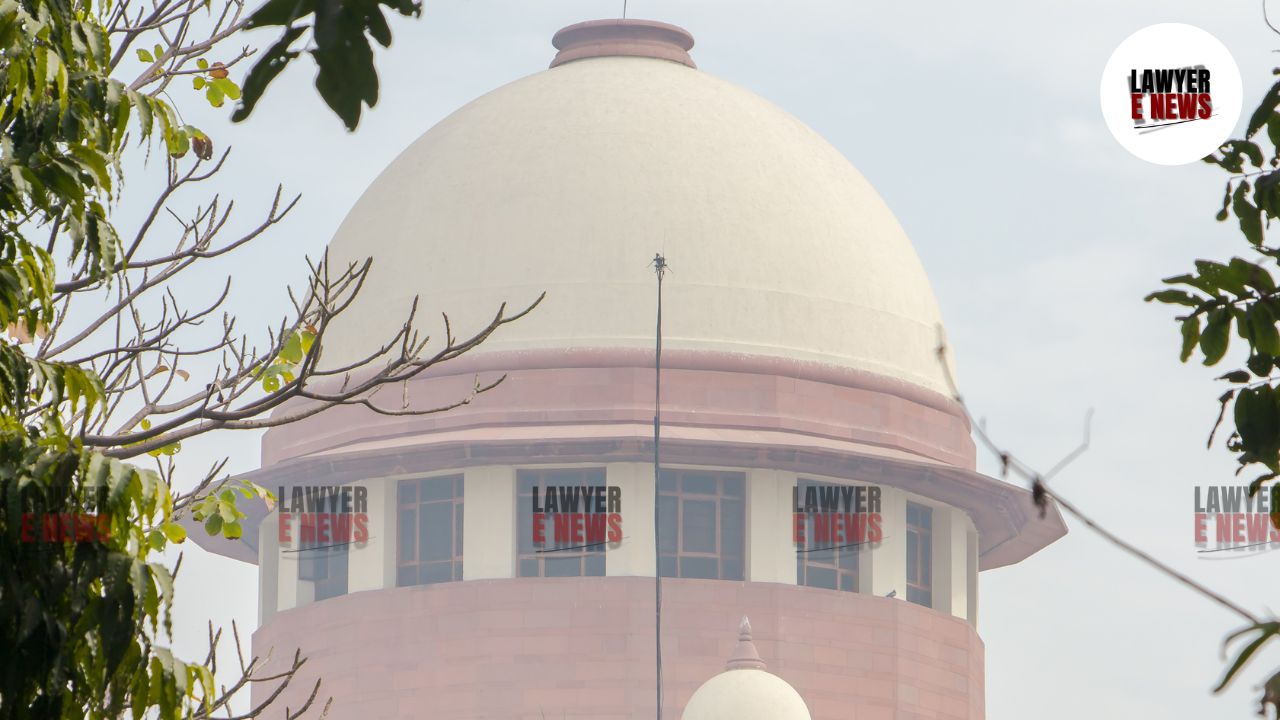-
by Admin
17 December 2025 10:10 AM



Supreme Court of India delivered a significant ruling on the legal recognition and conservation of sacred groves (Orans) in Rajasthan. The Bench comprising Justices B.R. Gavai, S.V.N. Bhatti, and Sandeep Mehta directed the classification of sacred groves as forest lands under the Forest (Conservation) Act, 1980, regardless of their size, to ensure their ecological and cultural preservation.
The judgment addressed the urgent need to protect sacred groves as unique biodiversity reserves that are integral to the spiritual and cultural lives of local communities. The Court observed, "The sacred groves are cultural treasures that symbolize biodiversity conservation interwoven with the traditions and spiritual ethos of local communities."
This case is part of the larger litigation stemming from the landmark T.N. Godavarman case (1996), where the Supreme Court extended the application of the FC Act, 1980, to all forests, irrespective of ownership or classification. Sacred groves in Rajasthan, known as Orans, have faced increasing threats due to deforestation, encroachment, and the dilution of protections under government policies.
The petitioner, through this interlocutory application, highlighted that the Rajasthan Forest Policy, 2023, diluted the focused conservation mechanisms previously outlined in the Rajasthan State Forest Policy, 2010. The petition sought the identification, survey, and notification of Orans as forests to protect their ecological and cultural significance.
The Court also examined the recommendations of the Central Empowered Committee (CEC), which emphasized the importance of Orans in conserving biodiversity and maintaining cultural traditions.
The Supreme Court’s judgment focused on several critical aspects related to the recognition and conservation of Orans.
The Court reaffirmed that the Forest (Conservation) Act, 1980, applies to all forests, including sacred groves, regardless of their ownership or size. It criticized the exclusion of smaller Orans from forest classification based on arbitrary size criteria, stating that such exclusions contradict the Court’s earlier rulings in T.N. Godavarman (1996).
The Court directed the State of Rajasthan to conduct detailed on-ground and satellite mapping of all sacred groves, including those mentioned in the petitioner’s list of 100 Orans, and classify them as forests. It emphasized that this classification should be based on their ecological and cultural importance, not merely their size or density.
Recognizing the historical role of local communities in preserving sacred groves, the Court invoked provisions of the Forest Rights Act, 2006, which protect community rights over forests. The Court directed that Orans should be designated as Community Forest Resources, ensuring that communities retain the right to manage and conserve these areas. It also empowered local communities, through their Gram Sabhas, to regulate access and prevent activities harmful to biodiversity.
The Court suggested that Orans should also be declared as Community Reserves under Section 36-C of the Wildlife Protection Act, 1972, to provide them with enhanced legal protection. This step would help prevent unauthorized changes in land use and ensure the long-term preservation of both biodiversity and cultural heritage.
The Court reiterated its earlier directions to implement the CEC’s recommendations, which called for:
Treating all sacred groves, irrespective of size, as forest lands.
Forming an expert committee to identify desert ecosystems for classification as forests.
Conducting a comprehensive survey to identify and protect Orans in all districts of Rajasthan.
The Court expressed concern over the delay in implementing these recommendations and directed their expeditious execution.
The Court took note of the dilution of protections for sacred groves in the Rajasthan Forest Policy, 2023, compared to the 2010 policy, which had included specific provisions for the legal and financial support of Orans. The Court directed the State Government to restore the focused conservation mechanisms outlined in the 2010 policy.
The judgment emphasized that Orans are not merely tracts of land but represent a grassroots model of conservation, where biodiversity thrives under community stewardship and traditional practices of restraint. These groves are critical for in situ biodiversity preservation, supporting endangered species, mitigating soil erosion, and recharging aquifers. They also serve as repositories of genetic diversity and contribute to the cultural and spiritual lives of local communities.
The Court drew parallels with successful community-driven conservation models like the Piplantri initiative in Rajasthan, where the planting of trees for every girl child born transformed degraded lands into thriving ecosystems.
The Court issued comprehensive directions to ensure the protection of sacred groves:
The Rajasthan Government must complete the survey and notification of Orans in all districts within a fixed timeline.
Identified sacred groves must be classified as forests under the FC Act without any size limitation.
The Ministry of Environment, Forest and Climate Change (MoEFCC), in collaboration with the Rajasthan Forest Department, must constitute a five-member monitoring committee, headed by a retired High Court judge, to oversee compliance.
Sacred groves should be considered for declaration as Community Reserves under the Wildlife Protection Act to prevent unauthorized changes in land use.
The Court also proposed that the MoEFCC develop a national policy for the governance of sacred groves, including a nationwide survey to map and document their boundaries.
The Supreme Court’s decision represents a milestone in balancing cultural heritage and biodiversity conservation. By recognizing Orans as forests under the Forest Conservation Act, 1980, and emphasizing the role of communities in their management, the judgment ensures that these ecological and cultural treasures are preserved for future generations.
The authorities have been directed to file a compliance report by January 10, 2025, to demonstrate progress in implementing the Court’s directions.
Date of Decision: December 18, 2024
